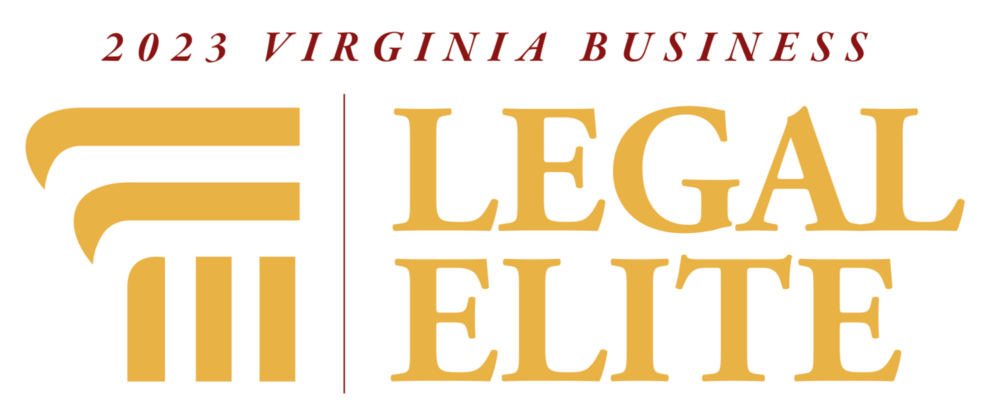Summary and Practical Tips on the January 7, 2019 USPTO Examination Guidance Regarding Statutory Subject Matter Under 35 USC §101 and Means Plus Function Claims
2019年1月7日付けでUSPTOは、101条の特許適格性およびコンピュータ関連発明の機能クレームに関する審査ガイダンスを発表しました。
要旨:
本稿ではPTOによる新たな審査ガイダンスの要約と共に、この新たなガイダンスに基づき企業はどのように対応すべきかという弊所による“実務上のアドバイス”をご提供します。今回の特許法101条のAlice/Mayoテストの審査ポリシーの変更は、ソフトウェア、コンピューター、AI、機械学習、通信等の権利化を目指す企業にとって大きな関心となるはずです。
今回の101条に関する新たな審査ガイダンスは、これらソフトウェア分野の企業にとってはありがたいプロパテントに向かう変更と言える。主な変更点はAlice/Mayoテストにおける最初のステップ(ステップ2A)における下記の2点になる:
(1) abstract idea(抽象概念)として扱われる主題を以下の3グループに限定:1.単なる数学的なもの(merely mathematical)、2.人間による活動をまとめたもの(organizing human activity)、3.頭の中でのプロセス(mental process)
(2) もしクレームが司法上の例外(a judicial exception ―例えばabstract idea)を一部に含んでいたとしても、その実用上の応用(practical application)を含んでいれば、クレームは司法上の例外に向けられて(directed to)はいないと判断される(つまりステップ2AのテストはNoになり特許適格性“あり”と判断される)
興味深いことに、上記101条の新たなガイダンスと共に、USPTOはコンピュータ関連発明に関するミーンズプラスファンクション(MPF)クレームの審査のガイダンスを発行している。審査ポリシーに大きな変更をもたらす上記101条の新たなガイダンスとは異なり、MPFクレームの審査ポリシーについては従来からの大きな変更は無いものと弊所は考える。かと言って、USPTOが無駄にこの審査ポリシーを発行したとは思えない。おそらくUSPTOの意図としては、コンピュータ関連発明のMPFクレームに関する既存の審査ポリシーをより厳格に適用するよう審査官に対して喚起を促したいのではないか。この考えが正しければ、以下の3つのいずれかを根拠とする、機能クレームに対する拒絶が増えることが想定される:(1)明細書中に(コンピュータにクレームされた機能を実行させるための)アルゴリズムが記載されていない(112条(b)項に基づく拒絶)、(2)明細書中にいかにして明細書に記載のハードウェア・ソフトウェアを使ってクレームされた機能を実現するかが記載されていない(112条(a)項に基づく拒絶)、(3)明細書中に当業者が不当な実験をすることなくクレーム発明の“全ての範囲”を製造し使用することができるだけの記載がされていない。つまり、企業側からすると、MFPクレームとして扱われないようなクレームを準備するとともに、クレームされた機能がどのようにしてハードウェア・ソフトウェアで実現されるかの技術的な説明を明細書中に記載することが望まれる。
特に、日本企業においては、日本明細書のクレームをそのまま直訳して米国出願したり、例えば“学習部”(learning unit)といったブラックボックス型の機能ブロックのみを明細書中に記載してその機能が実際にどのように実現されるかの詳細な記載やアルゴリズムが記載されていないケースが多いため、十分に注意されたい。
(詳細は以下をご参照下さい)
Alice/Mayo, 35 USC 101, Abstract Idea
The new examination guidance on 101 is a move toward a pro-patent policy that should especially help innovative companies in the areas of software, computers, AI, machine learning, and communications. The main change is in the first step (step 2A) of the Alice/Mayo test, by the USPTO (1) specifying only 3 groups of subject matter considered to be an abstract idea (i.e., merely mathematical, organizing human activity, or mental process), and (2) clarifying that a claim is not “directed to” a judicial exception (an abstract idea is one type of judicial exception) if the claim includes a judicial exception but the judicial exception is integrated into a practical application of that exception.
To avoid unnecessary expense, amendments and estoppel, it will be critical for companies to adapt their claiming strategy to at least include a practical application of the invention in the claim itself. For example, instead of just claiming a machine-learning model, the claim should also apply the model to do something, such as “detect a physical object”. Further steps to minimize the risk of receiving a 101 rejection are to (1) include in the claim a technical feature that is not merely mathematical, organizing human activity, or mental processes, and (2) include in the specification a description of a technical problem that the invention solves in a practical application of the inventive technology.
This change will especially have a big impact on examiners in Technology Centers such 2600 (Communications), 3600 (Transportation, Electronic Commerce, Construction, Agriculture, Licensing and Review), TC 2400 (Computer Networks, Multiplex, Cable and Cryptography/Security) or 2100 (Computer Architecture Software and Information Security). Until now, these examiners have been trained to construe a claim to be “directed to” an abstract idea if the claim merely includes a judicial exception. For example, in TC 2600 Examiners have been trained to conclude that the claim is “directed to” an abstract idea if, anywhere in the claim, the claim includes a mathematical formula.
This new examination guidance completely changes the game. It is now imperative that companies adapt their claiming strategies to align with the examination guidance.
For newly drafted applications the specification should include (i) some practical applications of the technology, (ii) an explanation of the practical advantage offered by the new technology, and (iii) at least an algorithm that supports the functional aspects of claims (this relates to the related examination guidance on means plus function claims). The newly drafted applications should include claims that (i) include a practical application of the technology, and (ii) avoid appearing as one of the three groups of abstract ideas (merely mathematical, organizing human activity or mental process).
For existing applications, it will be important to revise the claims prior to examination so the Examiner will have a favorable impression of the application before he or she spends much of their allotted time rejecting the application on 101 grounds. This waste of the examiner’s time greatly increases the eventual need for filing an RCE.
Finally, for patent applications under examination, when rebutting a 101 rejection, it will be important to (1) remind the examiner that the application is still pending and therefore the claims should be examined according to the USPTO’s new examination guidance, (2) explain that the claims are not “directed to” a judicial exception by providing a comparison of the three categories (merely mathematical, organizing human activity, or mental process) and features in the claim that are not in one of these categories, and (3) argue (and amend if necessary) that even if the claim could be construed as being “directed to” a judicial exception, the claim includes language that shows that the exception is integrated into a practical application of the technology, and thus the claim complies with 101.
Of course, this examination guidance will be new to Examiners as well. It has been our experience that working directly with Examiners to identify how to overcome a 101 rejection is the best way to proceed. Interviews are particularly helpful in this regard because Examiners will often explain the basis for their rejection in a very practical way, such as an explanation of what is required within their particular Art Unit to overcome a 101 rejection. For example, in some Art Units it is necessary to make an In re Abele amendment/argument (e.g., a claim to mathematical model may not comply with 101, but if the data from the model is applied to a tomographic scanner, then it does comply with 101). The new guidance will make interviews even more important to overcoming a 101 rejection without receiving another Office Action. It is our experience that Examiners are willing to work cooperatively with us, especially in personal interviews, to find mutually acceptable ways to advance the prosecution without issuing more Office Actions. It is reasonable to believe that different Art Units will apply this new guidance in different ways because these same Art Units applied the old guidance in different ways. There is no better way to find out “what is needed” to avoid or overcome a 101 rejection than to hold an interview with the Examiner and find out what internal rules govern their examination. Through many hundreds of interviews, we found that they will simply tell you if you ask.
The detailed examination guidance for the USPTO’s new 101/Alice test is found at:
https://s3.amazonaws.com/public-inspection.federalregister.gov/2018-28282.pdf
Means Plus Function (MPF) Claims for Computer-Related Inventions
On the one hand, we do not find anything new in the new MPF examination guidance. However, we also consider this MPF guidance to be a big warning to companies seeking patents involving software. Moreover, it appears to us that the USPTO management expects Examiners to be more aggressive on reviewing the specification of applications that claim a result or a function, without claiming the structure for how this result or function is accomplished. This new examination guidance will likely breed a pattern of rejections that look something like this:
The Office construes Claim 1 to invoke 35 USC 112(f) because it claims a “___ unit” without a corresponding structure that performs the claimed function, and rejects Claim 1 under 35 USC 112(b) as being indefinite because the specification does not provide an algorithm or other structure sufficient to perform the claimed result, and also rejects Claim 1 under 35 USC 112(a) as failing to provide a specification with a sufficient written description of how the claimed function is accomplished or an explanation that enables the full scope of the claimed function.
Once again, this examination guidance is not new, but we have observed that Examiners have been very inconsistent in examining claims that include functional limitations, and specifications that are weak on technical descriptions and algorithms on HOW the claimed function is accomplished. It is quite possible that this new MPF guidance is a directive from the UPSTO management for Examiners to be much more consistent and aggressive in rejecting applications of computer-related inventions that have functional claims and specifications that lack technical detail.
Although we have been explaining these principles to our clients for some time, because the USPTO has just issued this new examination guidance, we provide a summary of it below. Subsequently, we offer some practical advice for how to avoid getting trapped in 35 USC 112 rejections.
The guidance first explains that it is okay to claim your invention according to the function it performs (this is the whole point of 35 USC 112(f), which defines MPF claims), and it explains how the examiners are taught to distinguish MPF from non-MPF. Essentially, the Office will construe a claim element as MPF if it describes the function or result, without sufficient structure to perform the function or result. Claim elements that use the terms “means” or “means for” are presumed to be MPF. However, at least the follow a generic placeholder terms are ALSO PRESUMED TO BE MPF: “mechanism”, “module”, “device”, “unit”, “component”, “element”, “member”, “apparatus”, “machine”, or “system”.
Interestingly, the new guidance does not provide a list of terms that always avoid a construction as MPF. Instead, the guidance says that “there is no fixed list of words that always avoid 35 USC 112(f) interpretation”. However, we note that section 2181 of the MPEP lists a number of terms such as “circuit”, “digital detector”, and “connector assembly” that have been found by the Federal Circuit to not invoke 35 USC 112(f). Also, this same section the MPEP explains that the term “aesthetic correction circuitry” is sufficient to avoid a construction under 35 USC 112(f) “because the term circuit, combined with a description of the function of the circuit, connoted sufficient structure to one of ordinary skill in the art”. Whether the USPTO will amend the MPEP to conveniently exclude such favorable examples is unclear. However, at least for now, there is support in the MPEP to avoid some of these 112(f)/112(b) and/or 112(f)/112(a) problems by claiming “a circuit configured to…” or “circuitry configured to…”. Nevertheless, when preparing an application, it is critical to provide the structural support in the specification, especially this aspect of the law (i.e., MPF) always seems to be evolving.
The new guidance then reiterates that if the claim element is construed as MPF, and it relates to a specific computer function, the claim will be rejected under 35 USC 112(b) if the specification does not provide an algorithm to perform the claimed function. Once again, there is nothing new about this requirement. However, what is likely to change is that Examiners will be much more likely to look for an absence of an algorithm and then reject the claim if there is not one, or they cannot quickly find it in the specification.
The guidance then reviews written description requirements and enablement requirements under 35 USC 112(a) as it relates to computer implemented functional claims. However, as with 112(b), the guidance does not describe anything new. The specification must provide a written description of the claimed features in sufficient detail (e.g., by including an algorithm) to show that the inventor has possession of the claimed invention at the time of filing. Only describing the result is not enough. For computer-related inventions, the specification needs to explain in writing how the disclosed hardware and software collaborate to achieve the claimed result or function. Likewise, the enablement requirement under 35 USC 112(a) is required. The appropriate test, “the 8 Wands factors”, is over 30 years old. The language of the new guidance seems to merely reinforce for the Examiners that this test is still appropriate for computer-related functional claims. The Office does, however, seem to emphasize that Examiners should be reviewing the specification to ensure that the description enables the full scope of the claimed invention, not merely part of it.
Practical strategy to avoid rejections under 112(f)/112(b) and/or 112(f)/112(a)
First, avoid having your claims construed as MPF, unless you want them to be construed that way. At least one MPF can be valuable in licensing, IPRs and litigation for a number of reasons, most of which relate to the scope of the claims being difficult to grasp, which can give an advantage to the patentee when construing their claim to show infringement, but also avoid invalidity.
A practical tip is to draft specification to include support for MPF interpretation. This drafting strategy will ensure that MPF interpretation is supported, while also providing support for claims that are to be interpreted BRI. At least for now, under the current case law, many claims can be drafted in a form of “a circuit configured to”, or “one or more circuits configure to…” or “circuitry configured to…”. The specification at least will need to provide some explanation of a circuit (e.g., CPU) as support for the claim language. In the case of a CPU-based processor, it is the software that configures the circuit to perform the function. Thus, the circuit is “configured by software to”… However, because some circuits may perform the function in hardware alone, it is better to claim a “circuit configured to” rather “ a circuit configured by software to” so both embodiments may be covered. Also, because the function may be performed on more than one circuit, and the circuits may be distributed (e.g., one circuit in a smartphone and another circuit in a cloud-based computer), using the language “circuitry configured to” should help to cover competitors’ devices that are performed on a single device, or distributed on multiple devices, or in the cloud.
While the first tip, as discussed above, was to avoid having claims construed as MPF, the next practical tip is to draft the specification to include an abundance of algorithms. The point is that if the claim is construed by the USPTO, or later by the PTAB or a Court, to be an MPF (even if you did not intend it to be an MPF claim), the scope of that claim will be determined by the structures disclosed in the specification that perform that function. The “structures” for computer-based inventions are essentially the algorithms that are disclosed in the specification. Accordingly, even though the claim language sounds broad (e.g., a correlation unit that correlates…), the claim will NOT cover any device that performs correlations. Instead, the scope will be based on the specific device you disclosed that executes the particular algorithm (and structural equivalent algorithms) included in the specification. Accordingly, more algorithms are better than fewer algorithms, and no algorithms can be a disaster.
Lastly, the algorithms that are described in the specification should provide some level of detail that of course cover the novel aspects of the invention, but also the auxiliary aspects as well. This is because the test requires the specification provide an adequate written description of how to make and use the invention that would enable someone of ordinary skill in the art to make and use the full scope of claimed invention without undue experimentation. This is not likely to be satisfied if the specification only has a few figures with general block diagrams and no specific algorithms.
The detailed examination guidance on Means Plus Function claiming is found at
https://s3.amazonaws.com/public-inspection.federalregister.gov/2018-28283.pdf
Conclusion
We view the new guidance to be pro-patentee for applicants who have computer-related inventions and have been frustrated with the USPTO’s past examination policy on 101. The new guidance will certainly assist patentees obtain patents on a broader scope of subject matter, with fewer 101 rejections, but only if they prepare the claims and specification to align with the expectations of the new guidance. Applicants who file direct translations, with all (or many) MPF claims, and specifications that do not provide the expected algorithms and technical detail will likely become frustrated with the number of rejections they will receive. On the other hand, those companies that implement a solid claiming strategy, supported with well-prepared specifications, should be pleasantly surprised with the breadth of subject matter they can claim with fewer rejections than they presently obtain.
Download the Summary
View Section 101 Guidance
View Section 112 Guidance
For media contacts, click here. For all other questions, please contact us.
About Xsensus
To learn more about Xsensus, please click here.









